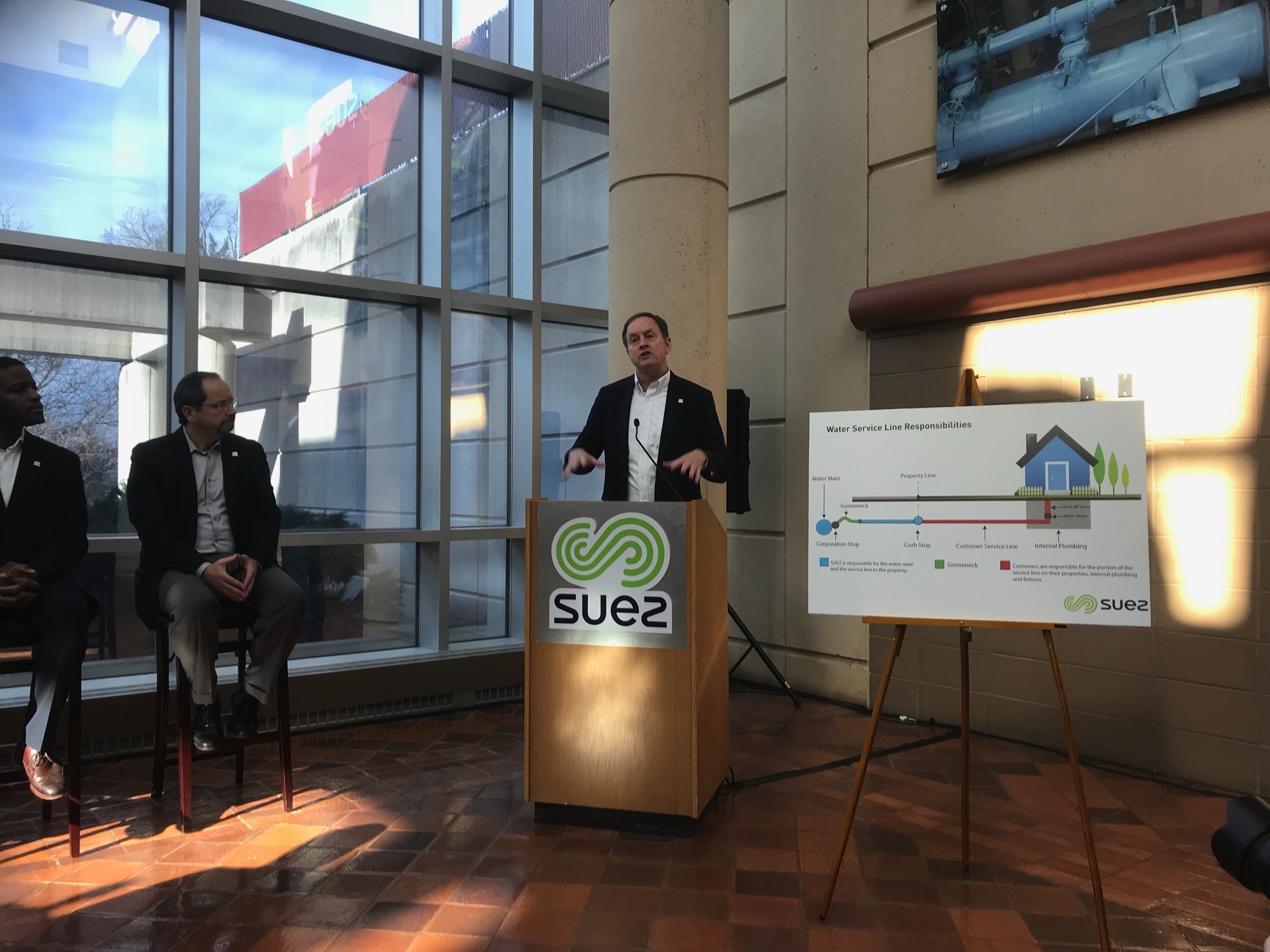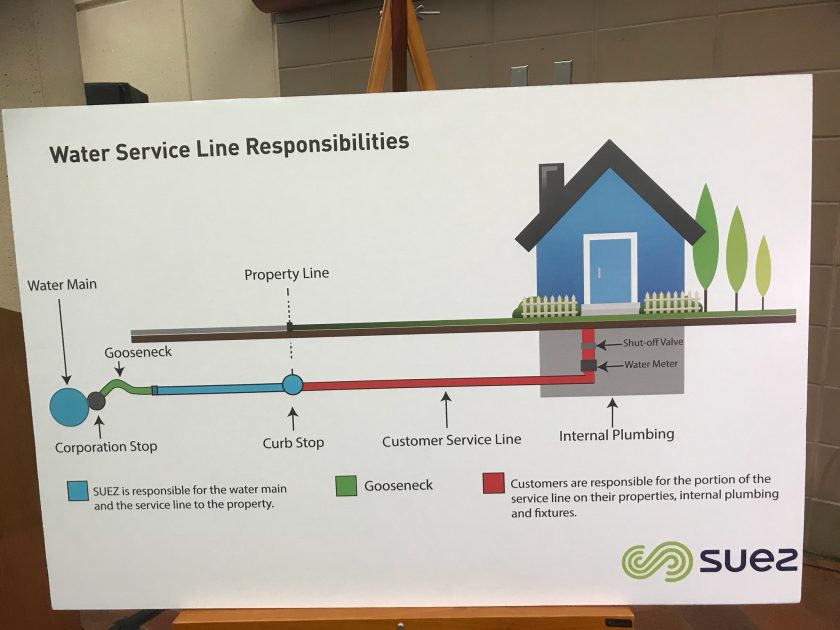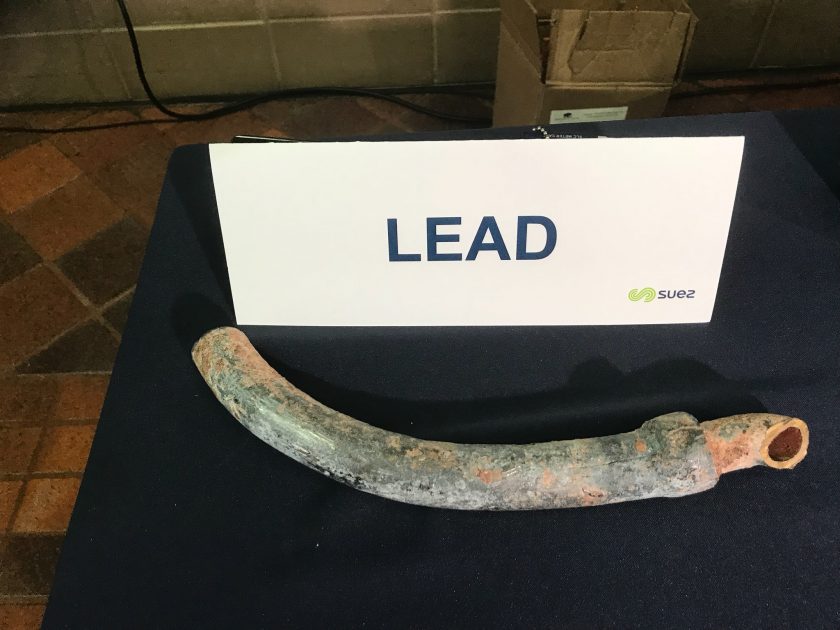
Homes Built Prior to 1986 at Risk Due to Plumbing
BY MICHAEL OLOHAN
OF NORTHERN VALLEY PRESS
HAWORTH, N.J.—Suez water customers throughout Bergen and Hudson counties were advised to be aware of possible high lead levels in drinking water after a “very limited” number of homes tested in both counties were found with levels exceeding federal standards.
After 16 of 108 homes served by Suez-owned lead water lines tested above federal standards for lead in drinking water, Suez officials held a news conference Jan. 16 offering customers assistance to help address questions about potential water quality concerns.
David Stanton, Suez North America’s president of utility operations, said there were “a very limited number” of homes that have detectable levels of lead—despite lead service lines—and Suez spends $90 million yearly to replace lead water service lines and performs almost 50,000 water quality tests each year.
All Suez officials stressed that no detectable levels of lead are in the water coming from the water treatment plant at its Oradell reservoir.
According to federal environmental rules, water utilities are required to alert customers when lead concentrations exceed 15 parts per billion in over 10 percent of water samples.
Suez provides drinking water to 200,000 homes and businesses in Bergen and Hudson counties, said utility officials.
Sources of lead
“The lead that we’re talking about in the water is coming from the plumbing between the main and the house—the service line—and it’s also coming from the homes that have lead fixtures and old lead plumbing and solder within the homes,” said Stanton.
He said approximately 5 percent of homes have lead service lines between the street and home and 15 percent have lead goosenecks, flexible piping that connects a water main to a service line leading to a home.
From the main water line in the street to the curb line, Suez owns the service line, while customers own the service line from the curb to their home.
Also, lead pipes and fixtures may be sources of potential lead contamination.

All customers notified
Stanton said all Suez customers who have utility-owned lead service lines would be notified and customers can also access that information via their online account or by calling Suez customer service at (800) 422-5987.
Officials said Suez customers should check online accounts at mysuezwater.com/njwq, visiting www.suezwq.com, or emailing sueznjcustserv@suez-na.com.
“Suez customer service representatives are available to answer questions, including those about lead lines and testing,” said officials.
Mark McKoy, utility operations general manager, said homes built after 1986 are unlikely to have lead service lines or plumbing.
Officials cautioned that even though a home may have a lead service line—whether owned by the utility or homeowner—that does not necessarily mean that their drinking water will have elevated lead levels.
McKoy said about 8,500 homes—or 5 percent of Suez customers—have utility-owned lead service lines.
He said less data is available on how many lead-based customer service lines exist but noted on average, homeowners pay $3,500 to $6,000 to replace lead service lines that run from the curb line to the home.
He said Suez is “urging” customers to test their service lines for the presence of lead or lead plumbing in homes built before 1986.
McKoy said a customer needs to locate the service line entering the house and use a flat-edged screwdriver to gently scratch the pipe. If the scratch area is shiny and silver, the service line is likely lead.
Another method to determine if the line is lead is to use a magnet—a magnet will not stick to a lead water line, he said.

Free testing of utility’s lines
Carol Walczyk, a Suez water quality director, said free water quality testing kits are available to customers with utility-owned lead service lines.
She said sampling should only be done from the kitchen faucet after it has not been used for six to 18 hours, use cold water only, and do not remove the faucet aerator.
A Suez spokesperson said if results are above the federal lead standard, Suez will supply the customer with a Brita Monterey water filter pitcher to reduce lead levels.
Walczyk said additional steps to reduce potential lead exposure include using only cold water, cleaning all aerators and screens on faucets regularly, and replacing all fixtures that contain lead. She said all methods to reduce lead exposure in drinking water are on the Suez website.
Suez officials said to prevent lead from leaching into water “we have had a corrosion control treatment program in place for decades. Essentially this coats the pipes to prevent lead from entering the water supply. We continue to rigorously monitor our system and will test for the next 12 months to make sure that our corrosion control treatment program is working exactly as it should,” said a Suez statement.
Asked why some homes are showing elevated lead levels now when Suez has had corrosion control treatment in place for decades, Stanton said “nothing unusual occurred” with Suez’s treatment program to effect elevated lead levels but investigations into the homes with elevated levels are continuing.
Suez advised all its customers to check online accounts to determine if their water supply lines are lead-lined and if so, to request a free test of their drinking water.
Rich Henning, a Suez spokesman, said Gov. Phil Murphy mentioned “a statewide and a nationwide issue of lead in drinking water” and sought additional funding sources to remove potential sources of lead in drinking water during his “State of the State” speech Jan. 15.
Henning said customers with any lead health-related concerns should talk to local health officials or their physicians.
Stanton also urged local officials to inform them when roads are opened up so they can check for lead service lines, and called on federal environmental officials to provide funding and assist in building a database of homes with lead service lines or pipes “much like we do with lead paint.”
‘Doing everything we can’
“I’d like to reassure our customers that we’re doing everything we can to resolve this issue. We have a dedicated group of professionals working on this full-time,” said Stanton. Stanton said Suez will coordinate any upgrades to lead water service lines if the customer wishes to replace their line.
Asked why a homeowner would spend up to $6,000 to replace a lead water line rather than use a cheaper water filter to lower lead levels, Stanton said “that’s a personal decision by the homeowner.”
Henning said in 1986 regulations changed and no homes built after that can use lead service lines or plumbing.
He said Suez currently replaces 7 percent of its lead service lines annually but hopes for additional federal assistance to expedite its replacement timeline.
“The ultimate goal is to remove all lead in the system. In addition to corrosion control, every time that we are doing work in the ground and we see lead we remove it. We are now expanding that program to more specifically target lead service line replacements in our system,” said a Suez statement.
Previously, a 2017 study found more than half of school water sources had detectable lead levels and water fountains in nearly 50 Bergen County school districts were shut down pending further testing, remediation, or replacement.
Much local and national attention has focused on lead in drinking water due to water treatment breakdowns in Flint, Michigan and increased attention to the impacts of exposure to lead in drinking water.
While water quality experts say no lead is acceptable in drinking water, it may be especially harmful to children’s cognitive development at any level.
Efforts to determine how many Suez customers in the Pascack and Northern valleys were potentially affected by lead service lines were not returned by press time.
